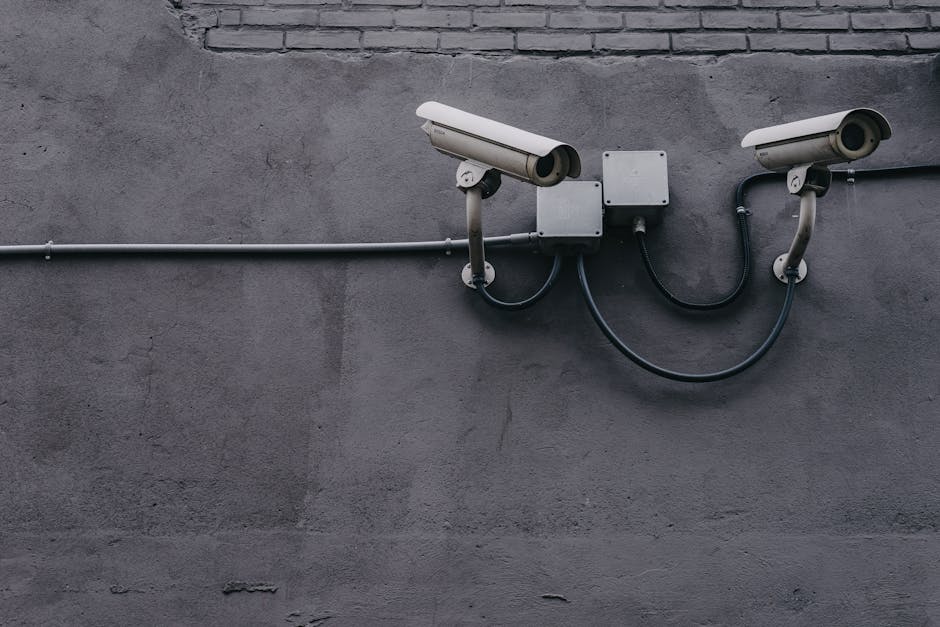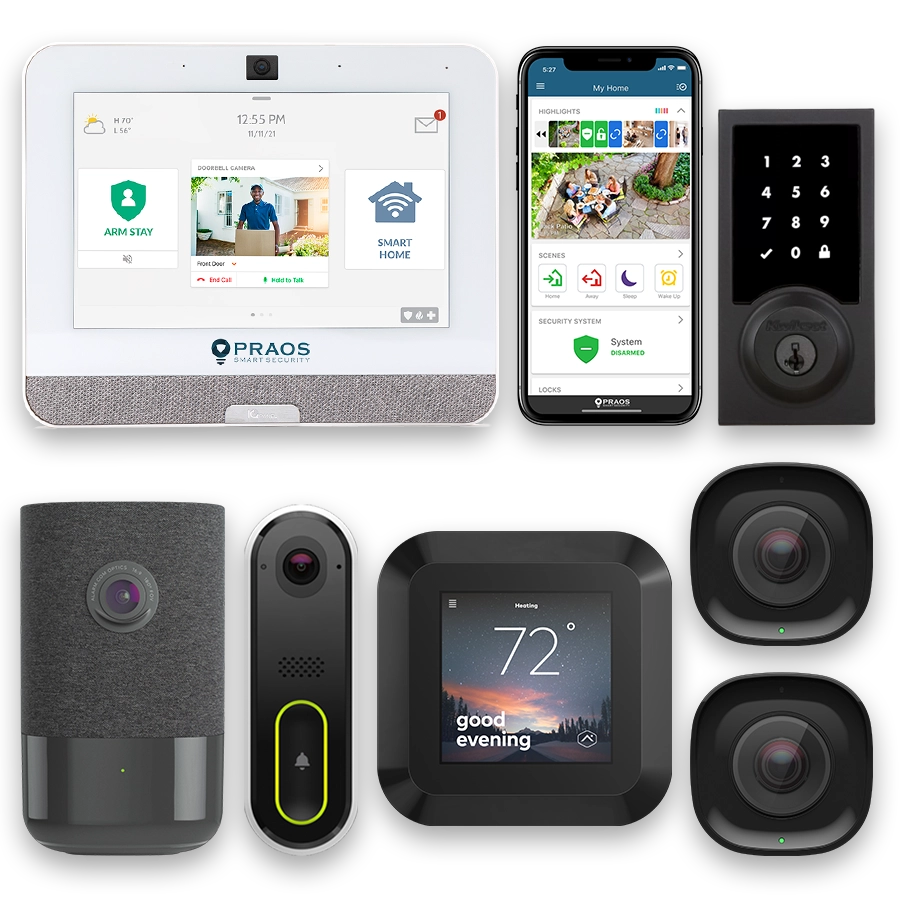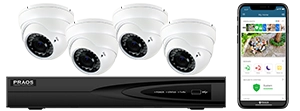- Introduction to Security Monitoring in Educational Institutions
- Current Security Challenges in Richmond’s Educational Sector
- Overview of Advanced Security Monitoring Technologies
- Implementation Strategies for Advanced Security Technologies
- Case Studies of Successful Implementations in Other Cities
- Legal and Ethical Considerations
- Measuring the Impact of Security Enhancements
- Future Trends and Recommendations for Richmond’s Educational Institutions
Introduction to Security Monitoring in Educational Institutions
Security monitoring in educational institutions has become an essential focus in ensuring a safe learning environment for students and staff. As schools increasingly become targets for various threats, investing in advanced security measures has grown critical.
Various studies have highlighted the rising trend of security incidents in educational settings. According to the National Center for Education Statistics (NCES), the rate of criminal incidents at schools remains a significant concern. Their data shows that during the 2017-2018 school year, 47% of public schools reported one or more crime incidents to the police, reflecting the need for more robust security systems.
Advanced security monitoring technologies have emerged as pivotal solutions to counteract these threats. These technologies include a broad array of systems like closed-circuit television (CCTV), access control systems, intrusion detection, and integrated communication networks. Each of these systems plays a unique role in mitigating potential risks and ensuring swift responses to emergencies.
The integration of connected monitoring systems provides real-time data and analysis, which is vital for preempting security breaches. For instance, CCTV cameras with high-definition and night-vision capabilities can help identify unauthorized personnel or suspicious activities on school premises. Meanwhile, access control systems restrict entry to sensitive areas, ensuring that only authorized individuals have access.
Moreover, modern monitoring systems are designed to be interconnected, allowing for a centralized management approach. This centralization is crucial in coordinating responses and ensuring that all security measures work in harmony. For example, if an unauthorized attempt to access a restricted area is detected by an access control system, the CCTV system can immediately focus on the specific location, and security personnel can be alerted through integrated communication devices.
Another prominent aspect of advanced security monitoring is the use of data analytics and artificial intelligence (AI). These tools can predict potential security risks by analyzing patterns and trends from vast amounts of data. For example, AI-driven systems can determine unusual behavior patterns, such as loitering or repeated unsuccessful access attempts, and notify security teams proactively.
Implementing such technologies not only helps in preventing incidents but also supports quicker resolutions when incidents occur. Schools equipped with these advanced systems can efficiently manage lockdown situations, guide emergency evacuations, and communicate effectively with law enforcement agencies.
The importance of deploying advanced security monitoring technologies in educational institutions cannot be overstated. As threats evolve, so too must the capabilities of the security systems safeguarding our schools. With the proper implementation and continuous monitoring, Richmond’s educational institutions can achieve a safer and more secure environment for their students and faculty.
Current Security Challenges in Richmond’s Educational Sector
Richmond’s educational sector faces several security challenges that significantly impact both students and staff. The increasing number of unauthorized entries, vandalism, and cyber threats are pressing concerns that necessitate advanced security measures.
One of the primary issues is unauthorized access to school premises. Despite conventional locking systems and security personnel, there are frequent reports of unauthorized individuals entering school grounds. This issue is exacerbated by the complexity of managing multiple entry and exit points in large educational institutions.
Another significant challenge is vandalism. According to a survey by the National Center for Education Statistics (NCES), approximately 25% of schools in the United States reported vandalism or theft incidents during the 2019-2020 school year. In Richmond, local news outlets have documented acts of vandalism ranging from graffiti to substantial property damage, disrupting the educational environment and incurring substantial repair costs.
Cybersecurity poses another critical challenge. As schools increasingly adopt digital tools for learning and administration, they become prime targets for cyberattacks. The Virginia Department of Education has recorded multiple instances of ransomware attacks, data breaches, and phishing schemes aimed at educational institutions in Richmond. These incidents not only compromise sensitive information but also disrupt educational activities.
Additionally, there is an increased focus on student safety and, wellness. Behavioral issues and incidents of bullying require proactive monitoring and intervention. According to the Centers for Disease Control and Prevention (CDC), nearly 20% of students nationwide report being bullied on school property. In Richmond, schools have implemented various anti-bullying programs, yet the need for comprehensive monitoring systems remains critical.
The above challenges are compounded by the ongoing issue of ensuring emergency preparedness. Schools must be able to respond effectively to a range of emergencies, from natural disasters to active shooter situations. Current limitations in communication systems and real-time information sharing can hinder prompt and efficient responses, putting the safety of students and staff at risk.
In summary, Richmond’s educational institutions face multiple security challenges, including unauthorized access, vandalism, cybersecurity threats, student safety issues, and emergency preparedness. Addressing these issues requires leveraging advanced security monitoring technologies to create safe and secure learning environments.
Overview of Advanced Security Monitoring Technologies
Advanced security monitoring technologies have the potential to significantly enhance the safety of educational institutions in Richmond. These technologies encompass a range of systems designed to detect, prevent, and respond to security threats in real-time. Understanding these technologies and their functionalities is crucial for effective implementation.
Video Surveillance Systems
Modern video surveillance systems are a cornerstone of advanced security monitoring. High-definition cameras, coupled with sophisticated analytics, offer real-time monitoring and automated threat detection.
- High-Resolution Cameras: Cameras with 4K or higher resolution provide clear and detailed images, making it easier to identify individuals and activities.
- AI-Powered Analytics: Artificial intelligence can analyze video feeds to detect unusual behavior, such as loitering or unauthorized access, and alert security personnel immediately.
- Cloud Storage: Storing footage in the cloud ensures data is safe from local hardware failures and allows for easy access and sharing when necessary.
Access Control Systems
Access control systems regulate who can enter specific areas within an educational institution, thus reducing unauthorized access and potential threats.
- Biometric Systems: These use fingerprints, facial recognition, or iris scans to confirm identity, offering higher security compared to traditional ID cards.
- Smart Card Systems: Using RFID technology, smart cards provide a convenient yet secure way to manage access to buildings and rooms.
- Mobile Credentials: Access can also be granted via smartphone apps, reducing the need for physical cards and enhancing convenience.
Intrusion Detection Systems
Intrusion detection systems are designed to identify unauthorized entries and alert security teams immediately, reducing the time it takes to respond to a potential threat.
- Perimeter Alarms: These systems detect attempts to breach fences or walls and trigger alarms to warn security staff.
- Motion Sensors: Installed in key areas, these sensors detect movement and can cover areas that are not consistently monitored by cameras.
Cybersecurity Measures
As educational institutions increasingly rely on digital platforms, ensuring their cybersecurity is critical. Various technologies can safeguard sensitive information and IT infrastructure.
- Firewalls and Antivirus Software: These fundamental tools protect institutional networks from external and internal threats.
- Encryption: Encrypting data ensures that even if it is intercepted, it remains unreadable without the correct decryption key.
- Multi-Factor Authentication: This method requires multiple forms of verification before granting access to systems, significantly improving security.
Integration of Security Systems
Finally, integrating these technologies into a cohesive system enhances their effectiveness. Centralized monitoring and control systems enable a coordinated response to incidents and improve overall security management.
The following table summarizes key technologies and their benefits:
| Technology | Benefits |
|---|---|
| High-Resolution Cameras | Clearer imagery for better identification |
| AI-Powered Analytics | Automated threat detection |
| Biometric Systems | Enhanced identity verification |
| Smart Card Systems | Convenient access management |
| Perimeter Alarms | Early warning of breaches |
| Firewalls | Protection from cyber threats |
Implementation Strategies for Advanced Security Technologies
Implementing advanced security monitoring technologies in educational institutions requires a strategic approach tailored to the specific needs and challenges of these environments. Richmond’s educational institutions, ranging from primary schools to universities, must consider numerous factors to effectively deploy these technologies.
One primary strategy involves conducting a comprehensive risk assessment. This assessment identifies vulnerabilities and potential threats within the institution. Schools must engage security professionals to evaluate existing systems, identify gaps, and recommend appropriate technologies. This process ensures that investments are targeted and address real security needs.
Following the risk assessment, institutions should develop a detailed implementation plan. This plan outlines the specific technologies to be deployed, such as surveillance cameras, access control systems, and alarm systems. It also includes timelines, budget considerations, and key personnel responsible for each stage of implementation.
An essential component of the implementation strategy is securing stakeholder buy-in. Administrators, faculty, students, and parents should be informed and involved in the process. Stakeholder engagement can be facilitated through regular meetings, informational sessions, and updates on the progress and benefits of the security enhancements.
Training and education are also critical. Staff members must be trained to use new security systems effectively and understand the protocols associated with them. This includes regular drills and simulations to ensure preparedness in case of an emergency.
Furthermore, schools should establish maintenance and monitoring protocols to ensure the ongoing functionality and effectiveness of the security technologies. This includes regular inspections, software updates, and system checks. Contracting with professional security firms for monitoring services can also enhance the system’s reliability.
Another strategy involves leveraging partnerships. Schools can collaborate with local law enforcement agencies, technology vendors, and other educational institutions to share best practices, resources, and expertise. Such partnerships can provide additional support and enhance the overall security posture.
Finally, institutions should continuously review and update their security strategies. This involves staying informed about new threats and emerging technologies, as well as soliciting feedback from the school community. Regular reviews and updates ensure that the security measures remain relevant and effective.
By adopting a strategic, inclusive, and proactive approach, Richmond’s educational institutions can successfully implement advanced security monitoring technologies, thereby enhancing the safety and security of their environments.
Case Studies of Successful Implementations in Other Cities
Case Studies of Successful Implementations in Other Cities
Several cities have successfully implemented advanced security monitoring technologies in their educational institutions, providing valuable insights and best practices for Richmond. These case studies highlight the effectiveness of various security solutions and their impact on overall safety in schools.
New York City
In New York City, the Department of Education deployed an extensive network of surveillance cameras across multiple school districts. The implementation focused on high-traffic areas and entry points to monitor and record activity continuously.
- Result: A significant reduction in incidents of vandalism and unauthorized access.
- Technology: High-definition cameras, integrated with real-time monitoring systems.
- Additional Measure: Use of AI-based analytics to detect suspicious behaviors.
Los Angeles
Los Angeles Unified School District (LAUSD) introduced the Raptor Visitor Management System to enhance safety by screening visitors before they enter school premises. The system scans IDs against sex offender databases, ensuring that potential threats are identified and managed appropriately.
- Result: Improved control and tracking of school visitors, enhancing student safety.
- Technology: Visitor management system integrated with existing security infrastructure.
- Additional Measure: Training for staff on usage and emergency protocols.
Chicago
Chicago Public Schools (CPS) adopted a comprehensive school safety strategy that includes the deployment of metal detectors and advanced camera systems. The initiative also involved upgrading communication systems for faster coordination with law enforcement agencies.
- Result: Enhanced detection of weapons and improved crisis response times.
- Technology: Metal detectors, surveillance cameras, enhanced communication tools.
- Additional Measure: Regular drills and collaboration with local police departments.
The table below summarizes key aspects of these implementations:
| City | Key Technologies Implemented | Result |
|---|---|---|
| New York City | High-definition cameras, AI-based analytics | Reduction in vandalism and unauthorized access |
| Los Angeles | Raptor Visitor Management System | Improved control and tracking of visitors |
| Chicago | Metal detectors, advanced cameras, communication systems | Enhanced weapon detection, improved crisis response times |
These successful case studies offer a roadmap for Richmond’s educational institutions to follow, ensuring a systematic and effective approach to improving school security.
Legal and Ethical Considerations
When implementing advanced security monitoring technologies in Richmond’s educational institutions, it is crucial to consider both legal and ethical implications. Ensuring compliance with relevant laws and respecting the privacy of students, staff, and visitors are foundational requirements for the successful deployment of these technologies.
Legal Considerations
Advanced security monitoring in educational environments must comply with several legal frameworks. Key among these are federal laws such as the Children’s Internet Protection Act (CIPA) and the Family Educational Rights and Privacy Act (FERPA), as well as state-specific legislation.
- FERPA: This federal law governs the privacy of student education records. It mandates that personally identifiable information from education records cannot be disclosed without consent, unless it falls under specific exceptions.
- CIPA: Applicable to schools that receive E-rate funding, this law requires institutions to implement internet safety measures. It also covers the protection of children from obscene or harmful online content.
Richmond’s educational institutions must also consider state laws and local regulations regarding data protection and privacy. These laws often outline requirements for data security, breach notifications, and restrictions on data sharing.
Ethical Considerations
Beyond legalities, ethical considerations play a crucial role in the adoption of advanced security technologies. These considerations revolve around the balance between safety and privacy, ensuring that security measures do not infringe on the rights and dignity of individuals.
- Data Privacy: Schools must handle data collected through security monitoring with the utmost care. This includes limiting data access to authorized personnel and ensuring data is used solely for security purposes.
- Transparency: Institutions should communicate clearly with students, parents, and staff about the nature and purpose of monitoring technologies. Providing transparent policies and obtaining consent where necessary can help build trust and acceptance.
- Minimum Intrusion: Security measures should be as non-intrusive as possible while still being effective. For example, opting for monitoring solutions that do not record audio or use facial recognition sparingly can address privacy concerns.
The following table summarizes key legal and ethical considerations:
| Consideration | Details |
|---|---|
| FERPA Compliance | Ensures privacy of student education records. |
| CIPA Compliance | Mandates internet safety measures and protection from harmful online content. |
| Data Privacy | Ensures limited access and proper use of collected data. |
| Transparency | Communicates monitoring policies clearly to stakeholders. |
| Minimum Intrusion | Adopts non-intrusive security measures. |
Considering these legal and ethical aspects is essential for Richmond’s educational institutions to not only comply with regulations but also foster a safe and respectful learning environment.
Measuring the Impact of Security Enhancements
In evaluating the effectiveness of the newly implemented advanced security monitoring technologies within Richmond’s educational institutions, it is essential to measure various impact metrics. These metrics fall into several categories: student and staff safety, incident response times, and overall return on investment (ROI).
Student and Staff Safety
The primary goal of security enhancements is to ensure the well-being of students and staff. Several indicators can be utilized to measure improvements in safety:
- Reduction in On-Campus Incidents: This includes monitoring the number of reported thefts, vandalism, and cases of violence before and after the technology implementation.
- Surveys and Feedback: Collecting feedback from students, teachers, and other staff about their perceived level of safety.
- Health and Mental Well-Being: Monitoring any changes in reports related to stress or anxiety connected to safety concerns.
| Metric | Measurement |
|---|---|
| Reduction in thefts | Comparison of theft reports year-over-year |
| Survey results | Annual student and staff safety surveys |
Incident Response Times
Advanced security technologies often significantly improve response times to incidents. Measurement of these improvements can be carried out by:
- Response Time Tracking: Collecting data on the time taken from incident detection to resolution.
- False Alarm Reduction: Evaluating the rate of false positives and their effect on overall security response efficiency.
- Coordination Efficiency: Measuring improvements in coordination between security personnel and local law enforcement.
Return on Investment (ROI)
It is critical for educational institutions to justify the cost of advanced security systems through tangible returns. ROI can be measured through:
- Cost Savings from Incident Prevention: Estimating the financial savings achieved by preventing incidents that would otherwise lead to financial loss.
- Insurance Premiums: Assessing changes in insurance premiums due to enhanced security measures.
- Attendance and Enrollment Rates: Monitoring any correlations between perceived safety improvements and higher attendance or enrollment rates.
| Financial Metric | Measurement |
|---|---|
| Incident prevention savings | Estimated cost savings from fewer incidents |
| Insurance premium changes | Annual review of insurance costs |
In conclusion, measuring the impact of security enhancements requires a multi-faceted approach, addressing safety perceptions, incident response efficiency, and financial metrics. This comprehensive evaluation will inform ongoing improvements and justify investments in advanced security monitoring technologies in Richmond’s educational institutions.
Future Trends and Recommendations for Richmond’s Educational Institutions
As Richmond’s educational institutions advance their security monitoring capabilities, understanding future trends is crucial to remain ahead of potential threats. Emerging technologies and evolving practices promise to enhance the safety and security landscape dramatically.
One of the significant future trends is the integration of AI-based surveillance systems. Artificial intelligence can analyze footage in real-time, identifying suspicious activities and potential threats much faster than human operators. This not only improves response times but also reduces the likelihood of human error.
Additionally, the proliferation of Internet of Things (IoT) devices will enable more comprehensive security networks. IoT devices can provide real-time data from various sources, creating a more holistic view of security situations. For instance, smart sensors can detect unauthorized entry, and automated alerts can be sent to security personnel, allowing for prompt actions.
Another critical trend is the move towards cloud-based security systems. These systems offer enhanced flexibility, scalability, and cost-effectiveness compared to traditional on-premises security solutions. With cloud-based platforms, institutions can easily update and manage their security protocols, integrate new technologies, and ensure that data is backed up and recoverable in the event of an incident.
Customization and integration of systems will also play a pivotal role. Companies like Praos are at the forefront of this movement. With their expertise in creating connected home experiences, Praos is well-positioned to adapt such technologies for educational institutions. Based in Richmond and with a solid track record of award-winning service, Praos not only offers free equipment and installation to new customers but also emphasizes the importance of a unified app for security, automation, and surveillance. This kind of integration ensures that all aspects of security are seamlessly managed, providing peace of mind around the clock.
Furthermore, the trend of lowering costs for advanced security features will continue. For example, Praos offers monitored systems starting at just $19.95 per month, making advanced security more accessible to a broader range of institutions. As prices continue to decrease and technologies become even more widespread, educational institutions in Richmond will be better equipped to implement robust security measures without stretching their budgets.
Lastly, an emphasis on user education and training will be paramount. Ensuring that staff and students are aware of the new technologies and how to respond to various security alerts can significantly enhance the effectiveness of these systems. Continuous training programs and scenario-based drills can foster a culture of safety and preparedness within educational environments.
In conclusion, by staying updated with these trends and leveraging the expertise of local leaders in security like Praos, Richmond’s educational institutions can significantly elevate their security monitoring systems, creating safer and more secure learning environments for the future.






